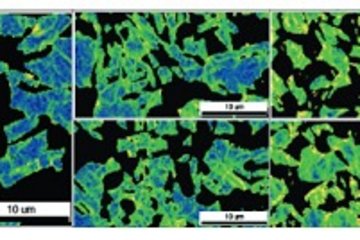All genres
141.
Talk
Hydrogen-assisted decohesion and localized plasticity in dual phase steel. MPIE Workshop on Hydrogen Embrittlement, Düsseldorf, Germany (2014)
142.
Talk
Composition dependence of phase stability, deformation mechanisms & mechanical properties of CoCrFeMnNi HEA’s. Compositionally Complex Alloys 2014, München, Germany (2014)
143.
Talk
Integrated experimental-numerical analysis of microstructural strain and stress evolution in bulk nanostructured alloys. Physics based materials models and experimental observations, Cesme, Turkey (2014)
144.
Talk
Integrated experimental-numerical methodology to map microstructural strain and stress evolution in bulk nanostructured alloys. MMM2014, San Francisco, CA, USA (2014)
145.
Talk
Gum metal plasticity. The International Symposium on Plasticity 2014, Freeport, Bahamas, USA (2014)
146.
Talk
Deformation micro-mechanisms in medium-Mn TRIP-maraging steel. 2nd International Conference on High Manganese Steel, HMnS 2014, Aachen, Germany (2014)
147.
Talk
Deformation micro-mechanisms in novel TRIP-assisted martensitic-matrix steel. International Conference on Martensitic Transformations 2014, ICOMAT 2014, Bilbao, Spain (2014)
148.
Talk
Enhanced Ductility in Graded Ultrafine-Grained Ferrite/Martensite Dual Phase Steel. MSE 2014, Darmstadt, Germany (2014)
149.
Talk
Influence of oxygen on the deformation behavior of Ti–Nb–Ta–Zr alloys. Thermec 2013, Las Vegas, NV, USA (2013)
150.
Talk
Size effects on mechanical stability of metastable austenite. Thermec 2013, Las Vegas, NV, USA (2013)
151.
Talk
Hydrogen effects on dual phase steel micro-mechanics. Thermec 2013, Las Vegas, NV, USA (2013)
152.
Talk
Micro/nano-mechanical analysis of novel multi-phase alloys. Karlsruhe Institute of Technology, Karlsruhe, Germany (2013)
153.
Talk
Microstructural and Mechanical Characterization of Cold Work Effects in GUM Metal. 22th GLADD meeting, Düsseldorf, Germany (2013)
154.
Talk
Research Highlights from Adaptive Structural Materials Group in MPIE. Seminar at KU Leuven, Leuven, Belgium (2013)
155.
Talk
Size effects on mechanical stability of metastable austenite. SFB Klausurtagung, Hagen, Germany (2013)
156.
Talk
Integrated in-situ experiments – full field crystal plasticity simulations to analyze stress – strain partitioning in multi-phase alloys. Nanomechanical Testing in Materials Research and Development IV, Olhão, Algarve, Portugal (2013)
157.
Talk
Mechanical stability of nano-sized reverted austenite in a reversion treated martensitic steel. Euromat 2013, Sevilla, Spain (2013)
158.
Talk
Size effects on austenite stability investigated by in-situ EBSD. BSSM 9th Int. Conf. on Advances in Experimental Mechanics, Cardiff, UK (2013)
159.
Talk
High resolution strain mapping coupled with EBSD during in-situ tension in SEM. BSSM 9th Int. Conf. on Advances in Experimental Mechanics, Cardiff, UK (2013)
160.
Talk
Deformation Mechanisms in Ti–Nb–Zr–Ta–O alloys. Euromat 2013, Sevilla, Spain (2013)











